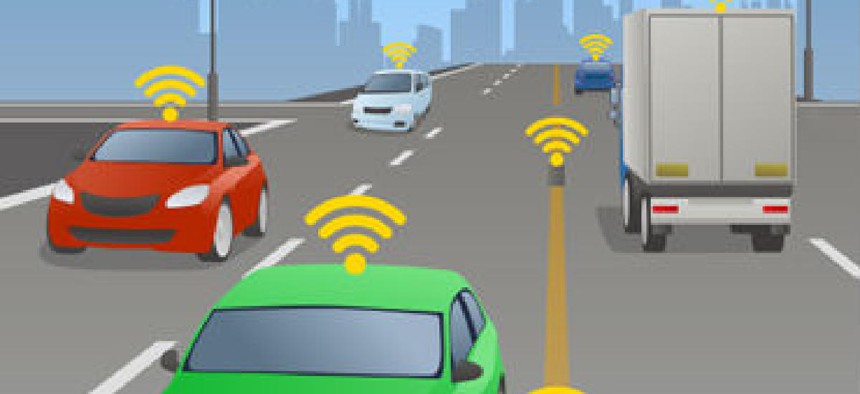New rules proposed for vehicle-to-vehicle comms

In a new proposed rule, the Transportation Department wants to require automakers to include vehicle-to-vehicle communications capabilities and envisions vehicle-to-infrastructure capabilities.

The Department of Transportation wants car and truck makers to build capabilities into new vehicles so they can "talk" to one another using short-range radio communications.
In a new rule proposed on Dec. 13, the agency wants automobile manufacturers to build vehicle-to-vehicle communications capabilities using standardized messaging into all new light-duty vehicles -- a move that would set up a common language.
The capabilities will help vehicles avoid collisions more effectively and save lives, according to the agency.
"This long promised V2V rule is the next step in that progression," Transportation Secretary Anthony Foxx said in a Dec. 13 statement on the proposed rules. "Once deployed, V2V will provide 360-degree situational awareness on the road and will help us enhance vehicle safety."
In the same Dec. 13 announcement, the department said the Federal Highway Administration will issue guidance for vehicle-to-infrastructure (V2I) communications that will help transportation planners integrate technologies that permit vehicles to "talk" to roadway infrastructure such as traffic lights, stop signs and work zones to ease traffic congestion and improve safety.
The announcements are part of DOT's efforts to get ahead of safety issues that will accompany the growth of autonomous private vehicles. In September, it released the first national guidelines aimed at helping emerging autonomous-vehicle technologies move ahead and ensure safety from the outset.
That guidance included a 15-point safety assessment for developing vehicles, a model policy for state regulators to use for their own rules and the stipulation that the National Highway Traffic Safety Administration will continue to have regulatory authority over autonomous vehicles.
DOT said NHTSA estimated safety applications enabled by V2V and V2I could eliminate, or mitigate, the severity of up to 80 percent of non-impaired crashes, including crashes at intersections or while changing lanes.
Similarly, the department said V2V devices using dedicated short range communications to transmit data, such as location, direction and speed, to nearby vehicles could help identify risks and warn drivers of imminent crashes. Location, direction and speed data could be updated and broadcast up to 10 times per second to nearby vehicles.
It added that vehicles that have automated driving functions -- such as automatic emergency braking and adaptive cruise control -- could also benefit from the use of V2V data to avoid or blunt the consequences of crashes.
NEXT STORY: IG: State's consular tech upgrade is slow going





